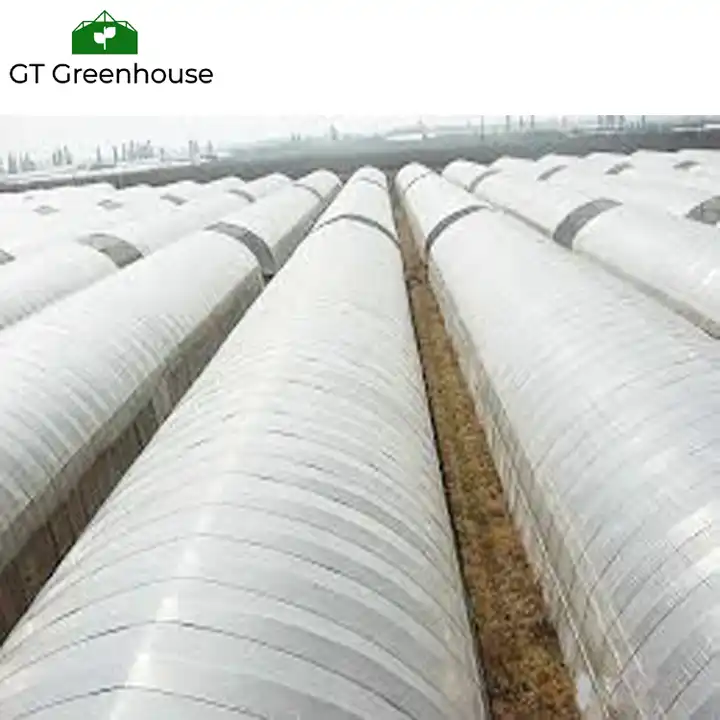The design of agricultural tomato greenhouse glass panels can accommodate different plant sizes and growth stages through several key features and considerations:
- Adjustable Height: Some agricultural tomato greenhouse systems feature adjustable-height glass panels or walls. This allows growers to increase the height of the greenhouse as the tomato plants grow taller, providing ample space for vertical growth and preventing overcrowding.
- Modular Construction: Modular greenhouse designs allow for easy customization and adaptation to accommodate different plant sizes and growth stages. Growers can add or remove glass panels as needed to create larger or smaller growing spaces, or to partition off sections of the greenhouse for different stages of plant development.
- Trellising Systems: Greenhouse glass panels can be integrated with trellising systems to support the growth of tomato plants at various stages. Trellises provide vertical support for vines as they grow upward, allowing for efficient use of space and maximizing light exposure for all plants.
- Spacing and Layout: The layout of tomato plants within the greenhouse can be optimized to accommodate different growth stages. Younger plants may be spaced closer together to maximize use of space, while older plants may be spaced further apart to allow for more extensive branching and foliage.
- Environmental Controls: Greenhouse systems often incorporate environmental controls such as temperature, humidity, and lighting, which can be adjusted to suit the specific requirements of tomato plants at different growth stages. For example, supplemental lighting can be provided to stimulate growth during early stages, while temperature and humidity levels can be optimized for fruit development later on.
- Container and Bed Options: Some greenhouse designs include options for growing tomatoes in containers, raised beds, or hydroponic systems. china Agricultural Tomato Greenhouse Glass Panels This allows growers to tailor the growing environment to the specific needs of their plants and easily transition between different cultivation methods as needed.
- Pruning and Training: The design of greenhouse glass panels may facilitate pruning and training techniques to manage plant size and shape. Pruning removes excess foliage and encourages more compact growth, while training techniques such as clipping or tying vines to trellises help control plant structure and optimize light exposure.
- Harvesting Accessibility: Greenhouse designs may incorporate features such as wide aisles, raised platforms, or automated harvesting systems to facilitate access to plants for pruning, maintenance, and harvesting at all growth stages.
Overall, the design of agricultural tomato greenhouse glass panels is carefully planned to accommodate the diverse needs of tomato plants at different growth stages, providing growers with a flexible and efficient environment for cultivating healthy and productive crops. By incorporating adjustable features, trellising systems, optimized layouts, and environmental controls, greenhouse systems can support optimal growth and development of tomatoes from seedling to harvest.
